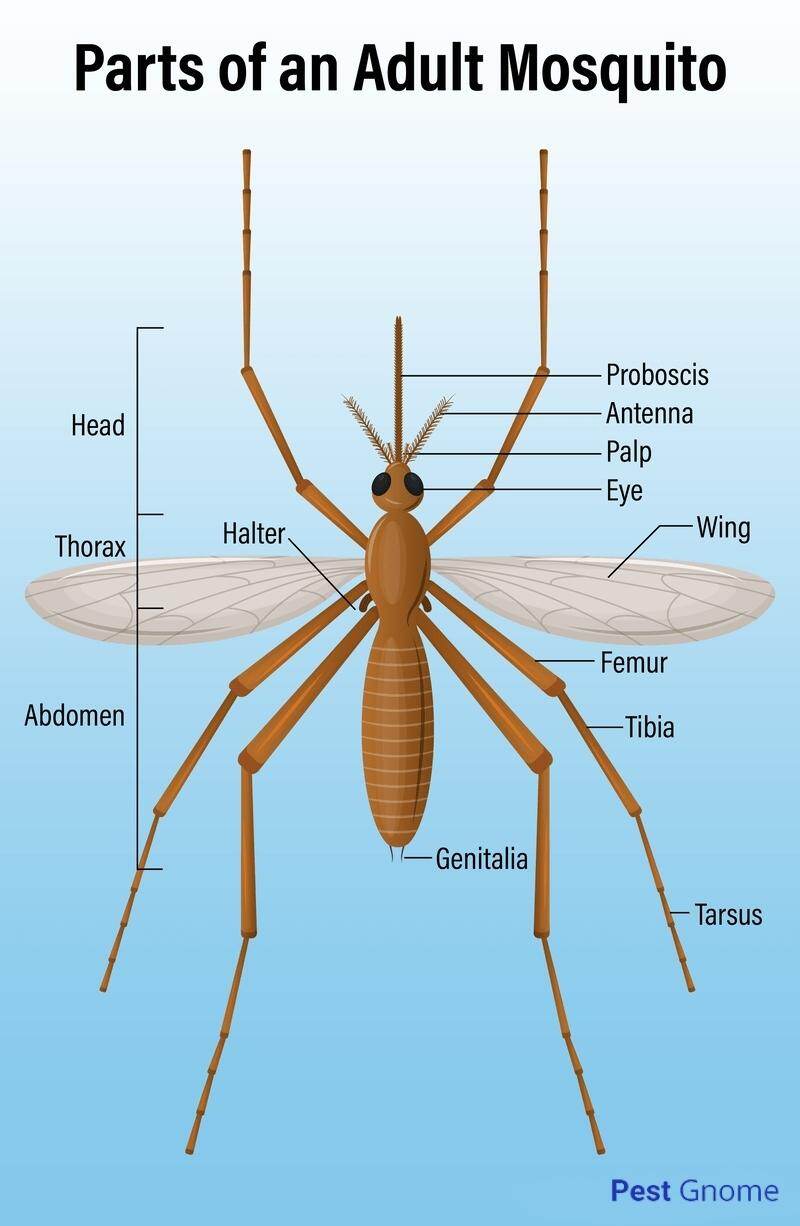The mosquito. Even the etymology of the word, derived from the Spanish diminutive for “little fly,” belies the disproportionate impact this tiny creature has on our world. Understanding its morphology is key to appreciating its intricate design – a design honed by millennia of evolutionary refinement. They are more than just irritating pests; they are complex biological entities.
Overall Appearance: A Miniature Marvel of Engineering
Mosquitoes, at first glance, appear as fragile, long-legged insects, often mistaken for gnats or crane flies. Their diminutive size, typically ranging from 3 to 9 mm, is deceptive. Observe their delicate structure: the gossamer wings, the spindly legs, the elongated proboscis. Each element contributes to their unique ecological niche. They possess a certain grim elegance.
The Head: A Sensory and Feeding Command Center
The mosquito’s head is a marvel of sensory and feeding adaptation. It’s not merely a place to hold a brain; it’s a sophisticated command center. The most prominent feature is undoubtedly the proboscis, a needle-like apparatus used for piercing skin and drawing blood. In females, this structure is elongated and highly specialized; in males, it is often less developed and used for feeding on nectar. Imagine a miniaturized, biological hypodermic needle. Around the proboscis are sensory palps, which are used to detect carbon dioxide and other attractants emitted by potential hosts. These palps act as exquisitely sensitive chemical antennae, guiding the mosquito to its target. The antennae themselves are also crucial sensory organs, equipped with Johnston’s organ which allows the mosquito to detect the minute vibrations of sound, aiding in mate location and predator avoidance. Their eyes, composed of numerous ommatidia, provide a wide field of vision, crucial for detecting movement and navigating their environment. Each facet contributes to a mosaic-like perception of the world.
The Thorax: Powerhouse of Flight
The thorax, the central segment of the mosquito’s body, is primarily dedicated to locomotion. It houses the powerful flight muscles necessary for sustained aerial maneuverability. The wings, covered in scales, create a corrugated surface that enhances lift and reduces drag. Note the delicate fringe of hairs that lines the trailing edge of each wing; this fringe further optimizes aerodynamic performance. Mosquitoes don’t just fly; they perform aerial acrobatics. The thorax also bears the legs, which are long and slender, allowing the mosquito to perch on various surfaces and navigate through dense vegetation. Each leg terminates in tiny claws, providing a secure grip.
The Abdomen: Storage and Reproduction
The abdomen is the most flexible part of the mosquito’s body, designed for storing blood and developing eggs. It consists of several segments, which can expand significantly after a blood meal. The coloration of the abdomen can vary depending on the species and the amount of blood ingested. Look closely; you might observe subtle patterns or iridescent sheens. The abdomen also houses the reproductive organs and the spiracles, which are openings for respiration. This section serves as the central repository of the mosquito’s life cycle.
Distinguishing Features: Telling Mosquitoes Apart
While all mosquitoes share a basic body plan, subtle differences in appearance can help distinguish between species. Factors like size, coloration, and the patterns of scales on the wings and legs can be used for identification. Some species have distinctive markings, such as white bands on their legs or a characteristic shape to their proboscis. Careful observation is key to identifying these subtle nuances. These minute variations hold the key to understanding their diverse roles in different ecosystems.
The Scales: More Than Just Decoration
The scales that cover the mosquito’s wings and body are not merely decorative; they serve several important functions. They protect the mosquito from desiccation, provide insulation, and contribute to flight efficiency. The arrangement and color of these scales can also be used for species identification. Consider them the mosquito’s suit of armor, adapted for survival in a challenging environment.
Legs: Delicate Stilts
Mosquito legs are long, slender, and seemingly fragile. However, they are surprisingly strong and adaptable. They allow the mosquito to perch on a variety of surfaces, from delicate flower petals to rough tree bark. The tarsi, the terminal segments of the legs, are equipped with claws that provide a secure grip. These legs are not just for standing; they are tools for navigating the mosquito’s world.
Antennae: The Sensory World Amplified
The antennae are the mosquito’s primary sensory organs, allowing it to detect a wide range of stimuli, including carbon dioxide, lactic acid, and other chemicals emitted by potential hosts. They are also sensitive to humidity, temperature, and even the minute vibrations of sound. The antennae are essentially antennae for survival.
Conclusion: A Masterpiece of Microscopic Design
The mosquito, often dismissed as a mere nuisance, is a testament to the power of natural selection. Each element of its anatomy is finely tuned to its ecological niche, from the exquisitely sensitive antennae to the needle-sharp proboscis. Next time a mosquito crosses your path, take a moment to appreciate the intricate design of this diminutive creature. Consider it a testament to nature’s ingenuity, a tiny titan of adaptation.







Leave a Comment